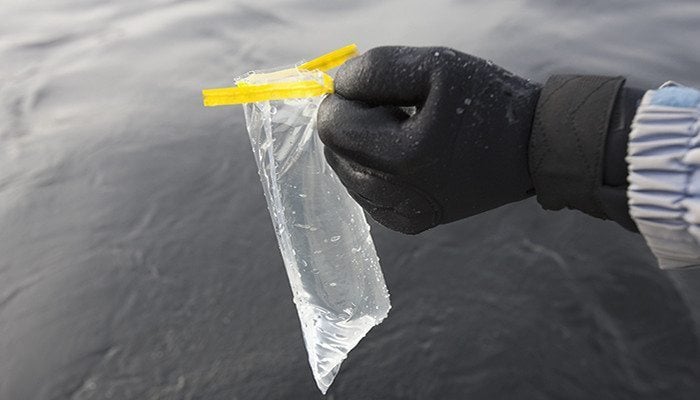What do current UK water challenges mean for field service?
Oct 17, 2017 • Features • Artifical Intellignce • Augmented Reality • Future of FIeld Service • Paul Whitelam • Water industry • ClickSoftware • Internet of Things • IoT • utilities
Paul Whitelam, VP of Product Marketing, ClickSoftware asks if IoT sensors, Artificial Intelligence and Machine learning will help the UK water industry avoid a looming crisis...
One would be forgiven for assuming a nation surrounded by water, with a storied history of naval exploration and an advanced privatised water management sector, would be exempt from facing a water or wastewater crisis.
But many experts agree that the current population boom and climate scenario are forcing the industrial, national, and regional water and wastewater situations towards crisis in the United Kingdom.
What do these mounting challenges mean for the field service management organisations? How can they innovate to meet and overcome each challenge while satisfying end consumers? In the following paragraphs, we discuss how water and wastewater service organisations can get ahead of the looming crisis.
Population boom, climate change, water scarcity combine to create the perfect storm
Ofwat, a government water management program overseeing England and Wales, recently published a report outlining many key challenges in these region. They city population growth and climate changes were identified as the key drivers of change, while growing pressure to address water scarcity, environmental quality, and resilience of systems in the face of rising consumer expectations as the major hurdles. Key among these, you will find:
- The UK population is forecasted to grow 20% over the next 20 years
- Rising environmental standards may drive up costs
- Technology to manage new customer expectations is lacking
- Major climate change has left specific regions at risk
- Water scarcity poses immediate threat to supply
- Customer expectations for service sector and water continue to rise
In reality, many of these challenges intersect.
This report cites that a full 60% of Thames Water’s customers are concerned about the environment. In addition, 85% of Wessex Water’s customers feel protecting rivers, lakes, and estuaries was critical.
The reality is more dire than consumers may realise. Given the uneven population distribution across the country, freshwater resources are often pulled from areas that are already under pressure, while new regions have been identified that previously threatened just years ago.
As the report cites, “Water catchments across Wales, south-west and northern England are predicted to experience significant unmet demand under many of the scenario combinations that the Environment Agency has considered.”
Can water management and field service teams get ahead of this looming crisis, or will consumers simply have to cut back on consumption altogether as the population booms?
3 ways UK service organisations can innovate to overcome crisis
Luckily, the field service industry is experiencing a renaissance in service technology that could solve current and future water problems. The Internet-of-Things, artificial intelligence, and predictive maintenance technology could each provide innovative solutions for both meeting growing demand, and minimising environmental impact.
1. Invest in and inform customers of water reduction faucets, shower heads, high efficiency washing machines and emerging technology
To be fair, this first recommendation is more about customer satisfaction, not just technology, but the fastest way to avert a water and wastewater crisis is the simplest; reduce the amount of water usage in businesses, factories, and homes.
With even a 10% increase in the number of homes, businesses, and facilities equipped with smarter end using devices, we could improve our water usage future in short order.
With the number of consumers who have expressed care for environmental issues, couldn’t a bit of a nudge from service providers push many over the edge to adopting more efficient technology?
With even a 10% increase in the number of homes, businesses, and facilities equipped with smarter end using devices, we could improve our water usage future in short order.
2. Enable IoT sensors on industrial water facilities and natural resource hubs
The Internet-of-Things promises to bring advanced real-time diagnostic capabilities to equipment, that for decades has required a human to perform a diagnostic task. By embedding internet-enabled sensors on all the equipment that cleans, processes, transports and delivers water, we could improve the efficiency of the entire water lifecycle by significant margins.
Would this require an up-front investment? Most certainly, but privatised water and wastewater organisations and service companies would certainly be keen on efficiency gains, especially if margins could move up incrementally.
Using IoT sensors for advanced real-time diagnostics could allow organisations to get predictive about water usage, resource allocation, and more. With the right application of IoT technology, equipment and processing, diagnostics could stand to become more efficient than ever.
3. Use AI and machine learning for ultimate efficiency gains
While seemingly intimidating at the outset, artificial intelligence and machine learning technology are in fact well within reach for organisations willing to embrace a healthy technical challenge. How about the payoff? Datasets that take a team of data scientists several weeks to interpret can now be crunched by AI algorithms in seconds.
Upon gaining results, future-oriented field service organisations will soon apply machine learning models that are ready-built for various service scenarios.
Think of machine learning algorithms as software with a brain. First, you develop an algorithmic model. Let’s use flooding—a common water crisis scenario—as an example. By first coding your software to understand all the steps a human would take in a flood scenario, and second enabling artificial intelligence algorithms to process information in real-time, you can effectively combine real-time flood data and your algorithm to unlock an immediate decision tree.
The software acts upon data in an instant, making airtight decisions and optimising your entire field service chain the same way your dispatch, or service executives would—given the parameters of your programmed scenario. But the main difference between AI software managing a service chain, and a human being? Software will make fewer mistakes.
As the UK continues to seek a resolution to current and future water scenarios, a healthy balance of policy, innovation, and customer support will be required.
Be social and share





















 Field Service News is published by 1927 Media Ltd, an independent publisher whose sole focus is on the field service sector. As such our entire resources are focused on helping drive the field service sector forwards and aiming to best serve our industry through honest, incisive and innovative media coverage of the global field service sector.
Field Service News is published by 1927 Media Ltd, an independent publisher whose sole focus is on the field service sector. As such our entire resources are focused on helping drive the field service sector forwards and aiming to best serve our industry through honest, incisive and innovative media coverage of the global field service sector.
Leave a Reply